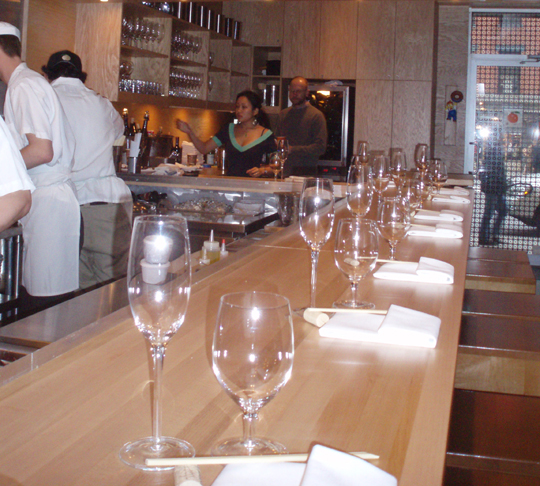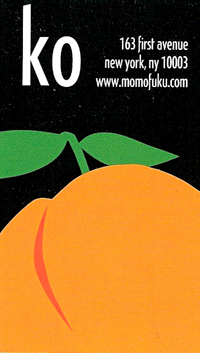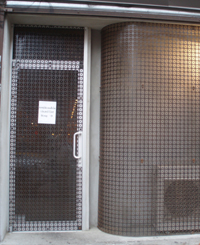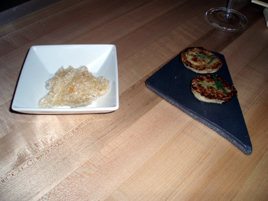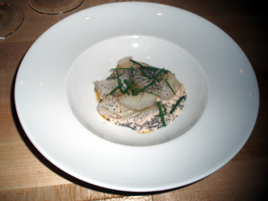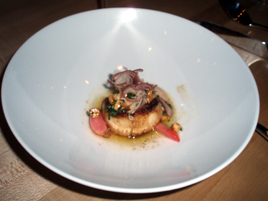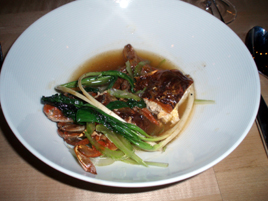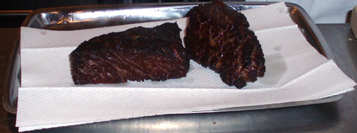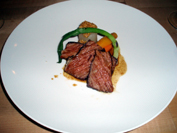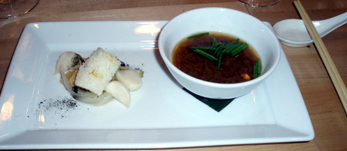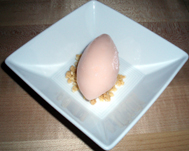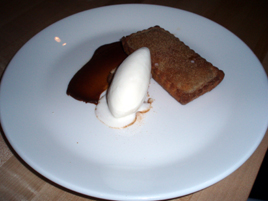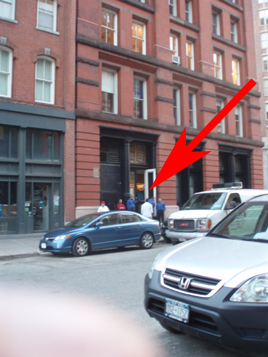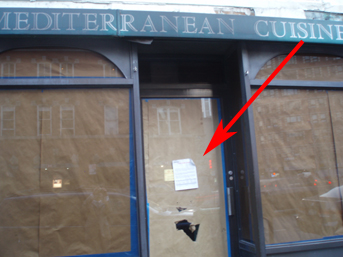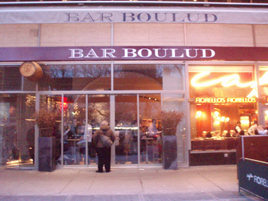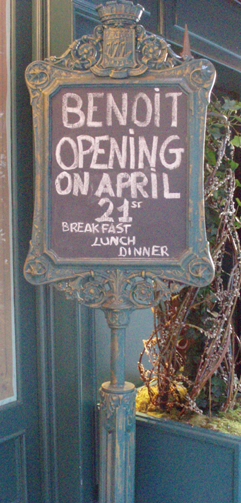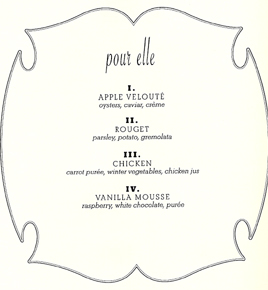Stars: Here and Elsewhere
 Monday, April 14, 2008 at 09:30AM
Monday, April 14, 2008 at 09:30AM  Many media outlets, including this blog, use stars to rate restaurants. I’ve posted explanations of the star system before, but recently it struck me how much different the various “star systems” are, despite their surface similarity.
Many media outlets, including this blog, use stars to rate restaurants. I’ve posted explanations of the star system before, but recently it struck me how much different the various “star systems” are, despite their surface similarity.
This can cause quite a bit of confusion. In the Michelin Guide, one star is a significant honor, but in The New York Daily News one star means “disappointing”. The New York Times system is somewhere in between: one star means “good”. Three stars or more always signifies an extremely good restaurant, except in Time Out New York, where the scale goes up to six, and therefore three is just mediocre.
I thought it was time that all of these systems were summarized in one place. First, here’s a summary, with the systems listed roughly in declining order of pedigree. Beneath the name of each source, I provide a link to a page, or pages, where it’s explained in more detail:
| Source | Range | Explanation | ||||||||||||||
|---|---|---|---|---|---|---|---|---|---|---|---|---|---|---|---|---|
Michelin Guide | 1–3 |
| ||||||||||||||
0–4 |
| |||||||||||||||
New York Magazine | 0–5 |
| ||||||||||||||
1– | (No explanation) | |||||||||||||||
Time Out New York | 1–6 | (No explanation) | ||||||||||||||
Bloomberg | 0–4 |
|
I listed the Michelin system first, for though it is relatively new to New York, it has been employed in Europe since the 1930s. To be a “Michelin-starred” restaurant is an internationally recognized honor, and it’s a distinction many European tourists rely on. However, it’s the system that New Yorkers pay the least attention to.
The newspaper and magazine systems all operate on the same basic idea, though the meaning of a rating varies widely, depending on how high they go (four, five, or six), how low they go (one or zero), and whether they accommodate half-stars (only the Daily News does).
The New York Times is the dean of the star-bestowing media. It has been handing out stars since 1963. At the other extreme is Bloomberg, which seems to have inaugurated its star system just a few weeks ago with a three-star review of Jean Georges.
But most of the others are pretty new, too. New York Magazine’s star system debuted in 2006. The current system in the Daily News dates from the summer of 2007, after a lengthy period when the paper had no restaurant reviews. Time Out New York’s peculiar six-star system bowed in mid-2006.
New York Times
Although the Times system is 45 years old, it has changed often. Leonard Kim, the eGullet Society’s star system historian, has charted its many tweaks. The original system was just three stars, with the fourth added in 1964. In 1971, critic Raymond Sokolov added a separate rating of one-to-four “triangles” for service, atmosphere and décor. The triangles were dropped in 1973.
There’s more to the Times stars than the cryptic explanation printed in the newspaper every week. Thanks again to Leonard Kim, we know that Mimi Sheraton’s typical rating was one star (almost half of her reviews), with about 20–25% two stars, and another 20–25% zero stars. Three and four stars were given out quite infrequently. Kim thinks that “this is the most sensible system.”
Under Sheraton’s successor, Bryan Miller, the percentage of zero-star reviews dropped to around 10–15%, with one or two stars being handed out with about equal frequency (35–40%). Under the next critic, Ruth Reichl, two-star reviews were given out over half the time. She also gave out three stars a fairly generous 15% of the time, while zero-star reviews became a great rarity (4–5%).
William Grimes brought the stars back under control, reducing the frequency of three-star awards and increasing the frequency of one star. However, he continued Reichl’s practice of giving out zero stars only rarely. Bruni’s frequencies are more-or-less comparable to Grimes’s, but Bruni comes down hard on luxury restaurants while being quite generous with two-star ratings for extremely casual places.
Because the zero-star rating is so seldom used, some of the other ratings have lost their nominal meanings. For decades, one star has supposedly meant “good,” but Frank Bruni’s one-star reviews seldom sound good. It’s the rare restaurant nowadays that would be pleased to receive just one star. The Times’s zero-star reviews carry an additional label: Satisfactory, Fair, or Poor. (No other paper does this.) Bruni has given “Poor” only twice, he has never given “Fair,” and his “Satisfactory” reviews never sound very “satisfied.”
Some papers don’t reprint the definitions every week, but the Times does, along with this blurb: “Ratings range from zero to four stars and reflect the reviewer’s reaction to food, ambience and service, with price taken into consideration.”
That blurb has changed over the years. In 1974, it said, “The restaurants reviewed here each Friday are rated four stars to none, based on the author’s reaction to cuisine, atmosphere and price in relation to comparable establishments.” The words “comparable establishments” were dropped in 1984, though you could argue that the system in spirit still operates that way.
Bruni has explained what the stars mean to him:
There are no assigned percentages for food versus service versus ambience. The star ratings take into consideration all of those elements, giving primary importance to food, to come to a conclusion about how excited I would be to return to the restaurant. The number of stars chart ever greater degrees of excitement.
This cannot be the full explanation, because you’ll read two-star reviews in which he sounds extremely excited (e.g., Franny’s), and you’ll read other two-star reviews that sound like he hates the place (e.g., Gordon Ramsay). That’s because there is an unwritten “rule of expectation.” An expensive luxury restaurant expects to get at least three stars, and his review is written in light of that. In his Ramsay review, it sounded like he was “taking away” the implied third star. A two-star rating is supposed to mean “very good,” but the tenor of the review was “not good at all.”
There seems to be an unwritten rule that a three-star restaurant needs to have most, if not all, the trappings of “traditional luxury.” Frank Bruni has relaxed that requirement on occasion, but you haven’t seen a three-star pizzeria yet. There also seems to be an unwritten rule that there can be no more than half-a-dozen four-star restaurants at any given time. Four stars means “extraordinary,” and by its nature, it can’t often be given out.
None of the New York media updates obsolete ratings systematically, but the Times at least tries. In the first three months of 2008, four of Bruni’s reviews were updates, including two that Bruni himself had previously reviewed. New York’s Platt, as far as I know, has never updated any of his own ratings in several years on the job. However, with only 52 reviewing slots per year, most of them covering just a single restaurant, the Times often goes many years between updates, even when there have been significant intervening events.
For instance, the Times’s blurb for three-star Oceana says, “The good ship Oceana — a two-story town house decorated to resemble a yacht — has found a new surge of energy.” That “surge” dates from William Grimes’s 2003 review. The chef who supplied that surge of energy, Cornelius Gallagher, left Oceana in 2006, but the obsolete review remains in place. Major shakeups at three-star restaurants are infrequent enough that you’d think the Times could take note of them, but apparently Mr. Bruni doesn’t think so.
Two other changes over the years have limited the paper’s ability to keep its ratings updated. Up to the end of Bryan Miller’s tenure, the critic normally reviewed two restaurants per week. When Ruth Reichl arrived in 1993, she switched to one longer review of a single restaurant per week, dramatically reducing the paper’s bandwith to update previously given ratings. Frank Bruni has revived the custom of the double review, but he uses it only a handful of times per year.
The other change is in the way that casual, inexpensive restaurants are handled. Historically, the Times restaurant critic’s beat had a clear emphasis on “fine dining.” That became more explicit in 1992, when Eric Asimov started the “$25 and Under” column. Asimov used to cover serious, though inexpensive, restaurants. His successor, Peter Meehan, has been marginalized. His column now appears only every other week, and it is usually relegated to extremely humble eateries in the outer boroughs. As a result of this change, Frank Bruni now covers everything from delis to high-end French luxury palaces.
The Times does not give star ratings to its “$25-and-under” restaurants. New York has a separate star system for casual places (signified by one-to-five “hollow” stars). No other media outlet has a separate rating system, or indeed a separate critic, for casual dining.
Other Media
Since all of the other star systems are fairly new, there is nothing like the kind of historical perspective we have at the Times.
New York Magazine
The New York Magazine star system debuted with the January 1, 2006, issue. Adam Platt retroactively put star ratings on 101 restaurants, including many that he’d never reviewed himself. He surely couldn’t have paid the minimum of three contemporaneous visits that the Times requires of its critics.
All reviews since then have been rated on Platt’s zero-to-five system. The only explanation given for a five-point scale, rather than the traditional four, is that, “We chose to use five stars, instead of three or four, because the more levels of discrimination, or so the thinking goes, the more useful the list.” But despite having an extra step on his ladder, Platt has actually given three stars less frequently than Bruni. And except in his 101-restaurant retroactive list, he has yet to give out five stars, while he has given four only once.
The Others
The New York Daily News re-instated its restaurant reviewing column in August 2007, with Danyelle Freeman (a/k/a “Restaurant Girl”) handing out the stars. Initially, she used a one-to-four system, with half-stars allowed. In April 2008, she abruptly switched to a five-star system without an explanation, retroactively re-rating all of her previous reviews. Her system doesn’t go down to zero, so a one-star rating from Freeman is like a zero-star rating from Bruni or Platt.
Time Out New York instituted a six-star scale, which has never been explained, but its critics are fairly promiscuous with three and four-star ratings, making the TONY ratings entirely meaningless in relation to everyone else’s.
Bloomberg seems to have inaugurated a new zero-to-four star system with an April 2008 three-star review of Jean Georges, but it is too new for us to draw any conclusions.
This Blog
The rating system on this blog is similar to that employed by The Times. I award zero to four stars, with one star intended to signify a good restuarant, not “fair” (Bloomberg) or “disappointing” (NYDN). However, I endorse Adam Platt’s comment that “one star for a restaurant with elite aspirations is really not much better than no star at all.” Unlike the Times, I use half-stars, and I give separate ratings for service and ambiance, in addition to an overall rating.


